| Type | Protected cruiser | Hull | Steel |
| Displacement | 3,250 tonnes | Engines | 2 VQE; 12,500 hp; William Camp |
| Length | 102.4 m | Machinery | Steam, 2 shafts |
| Beam | 12.8 m | Speed | 18 kts |
| Draught | 4.8 m | Complement | 355 |
| Armament | 2x152mm QF L/45 B, 2x120mm QF L/45 B, 2xTT 457mm WH | ||
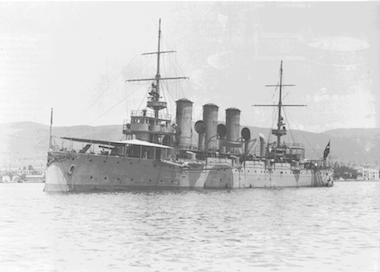
Mecidiye, named after Sultan Abdülmecid I, was constructed by the renowned United States shipbuilding company William Cramp & Sons. It was ordered by the Ottoman authorities in 1890, the keel was laid down in Philadelphia on 7 November 1901, with the ship eventually launched on 25 July 1903. Following successful sea trials, Mecidiye was officially commissioned on 19 December 1903.
Mecidiye took part in the Balkan Wars, shelling Bulgarian forts near Varna in October 1912, and engaging in naval battles against the Greek Navy, namely the Battle of Elli on 16 December 1912, and the Battle of Lemnos on 18 January 1913. Moreover, on 18 February 1913, she was part of the covering naval force for the Turkish amphibious landings at Şarköy. Despite facing attacks, including a near miss from a Greek submarine, Mecidiye continued to serve during the Balkan conflict.
During the First World War, Mecidiye operated in the Black Sea, where she played a crucial role in various operations. However, tragedy struck on 3 April 1915, when the ship struck a Russian mine around 15 miles off the coast of Odessa, resulting in her sinking and the loss of 26 crewmen. Survivors were rescued by the cruiser Hamidiye.
Remarkably, Mecidiye was salvaged by the Russians in May and June of 1915 and underwent extensive repairs and rearmament. Renamed Prut, the cruiser joined the ranks of the Black Sea Fleet of the Russian Empire, participating in the Trabzon landing operation before falling into the hands of German forces in May 1918 at Sevastopol.
Returned to the Ottoman Navy as of 13 May 1918 and recommissioned as Mecidiye, the cruiser's fate became entwined with the shifting tides of international diplomacy. Despite provisions in the Treaty of Sèvres for the transfer of Ottoman warships, including Mecidiye, to the Allies as war compensation, the subsequent Turkish War of Independence resulted in a different outcome, as the Treaty of Lausanne in 1923 permitted the new Turkish Republic to retain its former fleet After undergoing repairs and refurbishments at the Gölcük Naval Shipyard between 1925 and 1927, Mecidiye rejoined the Turkish Navy in June 1927.
Her later years saw Mecidiye serving various roles within the Turkish Navy, from large surface combatant to cadet training ship. Eventually decommissioned on 1 March 1947, Mecidiye was sold for scrap in 1952.
![]()
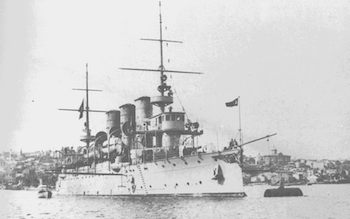
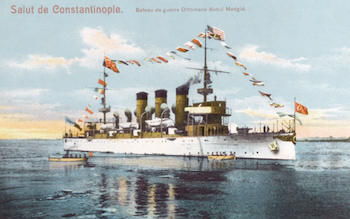
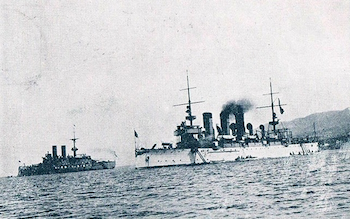
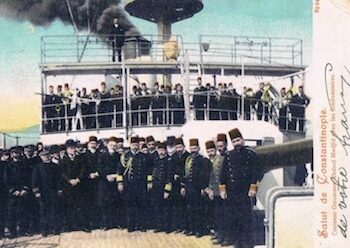
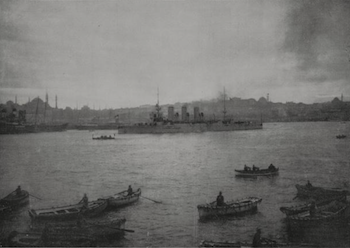
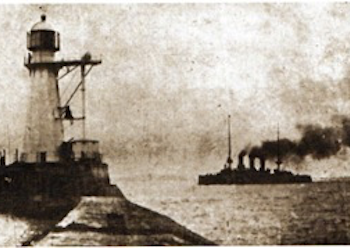
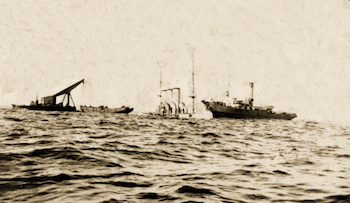
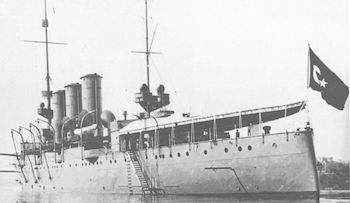
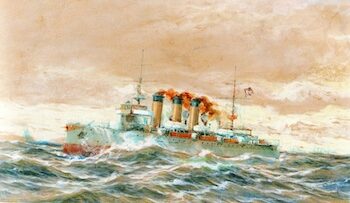
PAGE LAST UPDATED ON 9 APRIL 2024